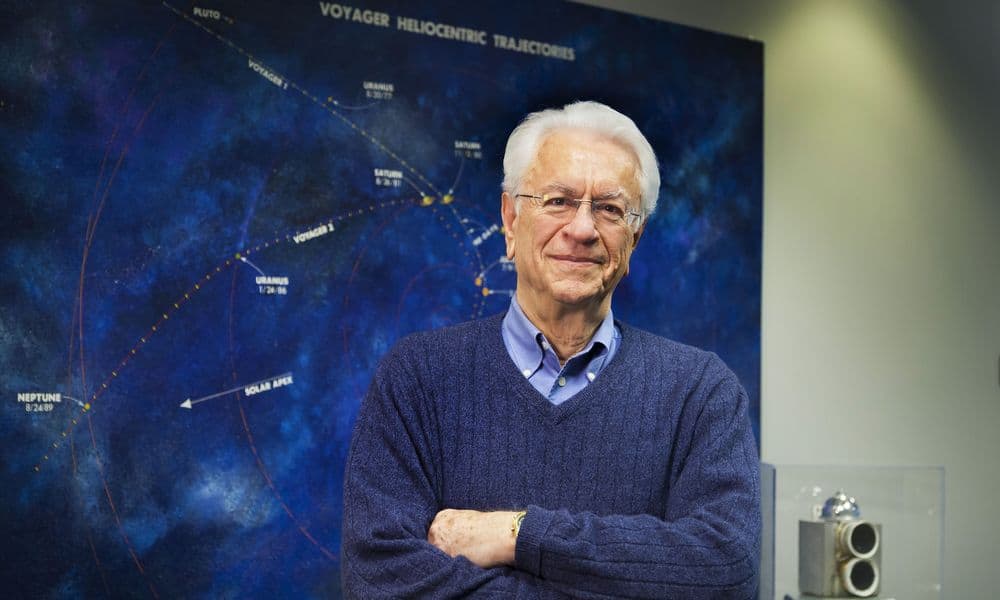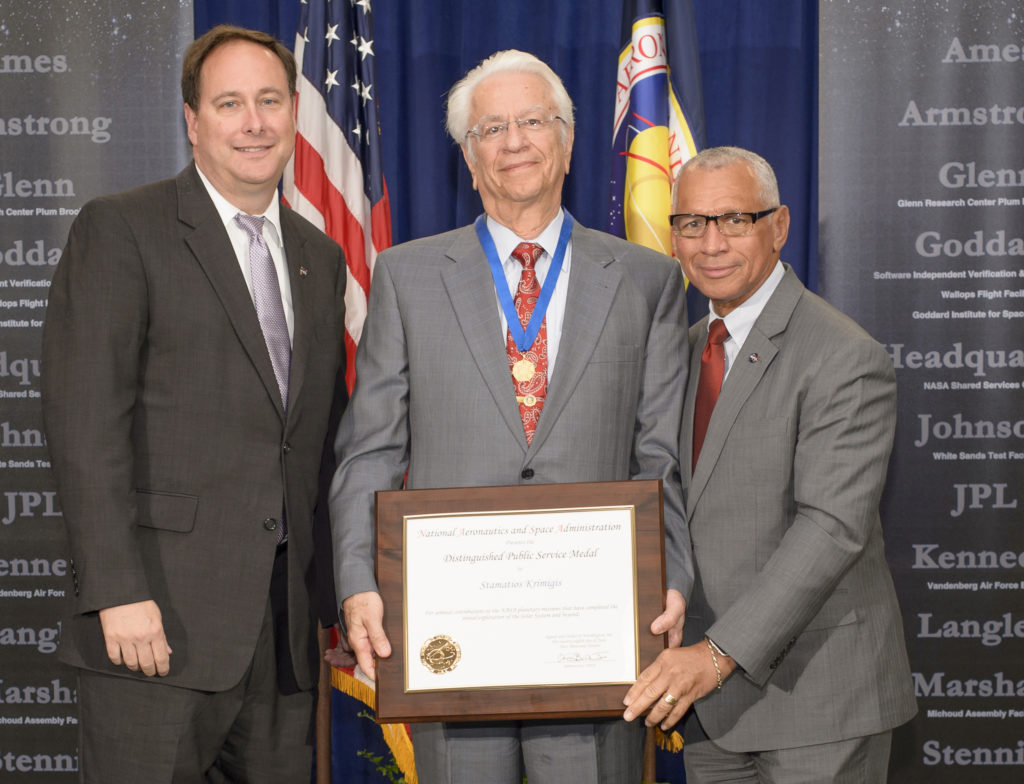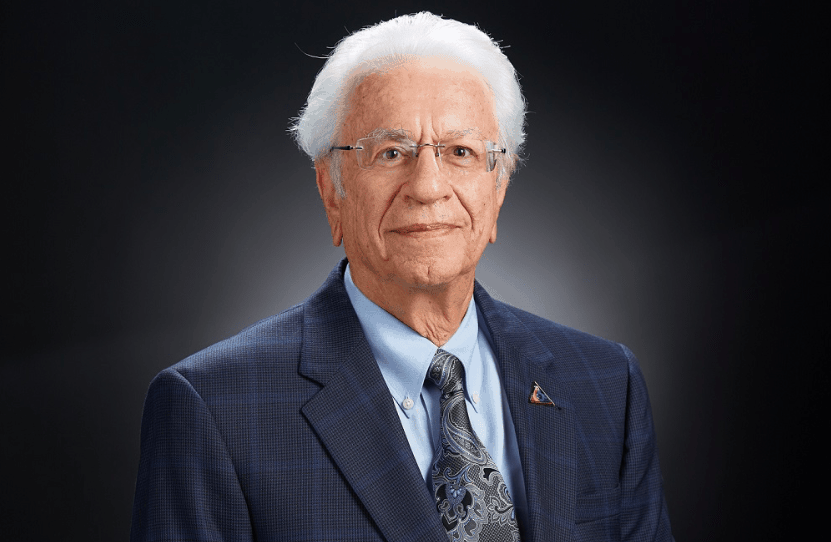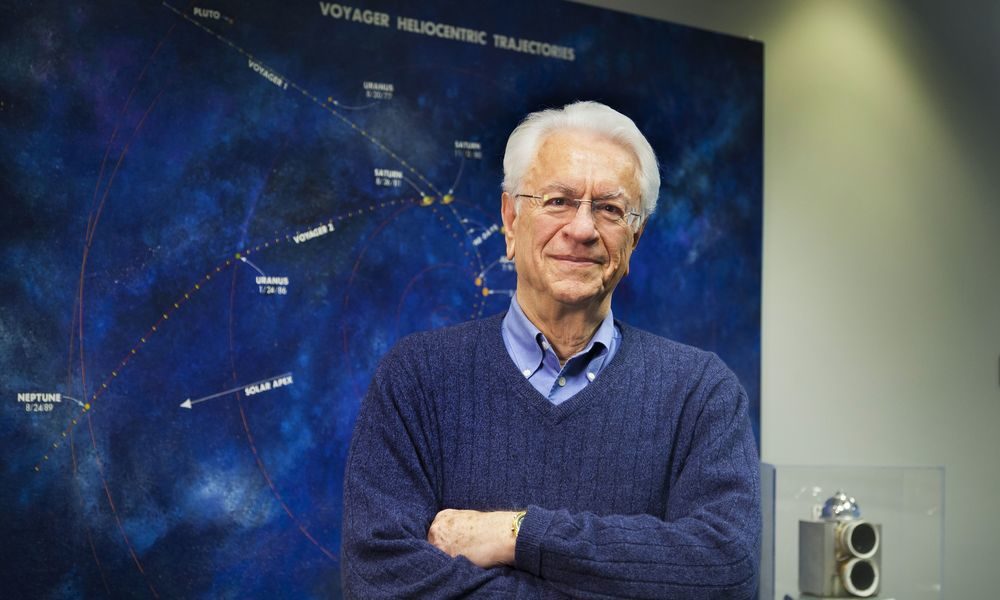
Through ingenuity, hard work, dedication, and passion, Professor Stamatios Krimigis, born on the village of Vrontados, Chios, has became one of the most influential scientists in the modern space explorations of the USA and the whole world.
The man, who gave many of NASA’s missions their finest hour, is Head Emeritus of the Space Department Applied Physics at Johns Hopkins University, member of the Academy of Athens, Greece, where he holds the Chair of Science of Space, and has now been appointed head of the newly established Hellenic Space Agency.

Obligations as head emeritus of the Space Department Applied Physics Laboratory at Johns Hopkins University in the United States and at NASA have kept Professor Krimigis away from his native Greece, but the next two years will see him spending a lot more time in Athens after he was appointed at the head of the newly established Hellenic Space Agency. The task at hand is to “build an agency from the bottom up” by uniting disparate state agencies under one new body, he told Ekathimerini.
Stamatios is known as the greatest Greek Astrophysicist, has participated in the most important NASA expeditions to the planets of the solar “neighbourhood”, such as the Voyager 1 and 2 and the New Horizons expedition, which in 2015 reached Pluto for the first time.
During a talk at the Athens Science Festival, he unravelled exciting stories of the space explorations in the solar system that began from Mercury and reached Pluto in 50 years-time, discovering places that no one could ever have imagined.

Dr. Krimigis has also been awarded NASA's highest service honour, after receiving the NASA Distinguished Public Service Medal in California in 2016.
“We are incredibly proud of Tom and this well-deserved recognition for his lifelong efforts to advance space exploration and science,” said APL Director Ralph Semmel. “Tom is a pioneer and visionary leader whose innovations helped inspire the creation of NASA’s Discovery and New Frontiers programs. His contributions over more than four decades have significantly expanded our view of the solar system and knowledge of the universe.”
Born in Chios, Krimigis earned a bachelor’s degree in physics from the University of Minnesota and a master’s and doctorate in physics from the University of Iowa, studying under James Van Allen, the former APL scientist who discovered Earth’s radiation belts.

He is the only scientist in the world to lead or participate in space physics experiments on all nine classical planets. He has served as a principal investigator on five NASA missions — including the legendary Voyagers and the Cassini Saturn orbiter — and as a co-investigator on many others.
Krimigis has designed, built, flown and analysed data from 21 instruments on various NASA and European Space Agency missions. His Low-Energy Charged Particle instrument flies aboard both Voyager spacecraft; on Voyager 1, LECP data was essential to determining that a human-built vehicle had left the solar system for the first time, in 2012.
Krimigis was also instrumental in establishing NASA’s ground-breaking Discovery Program of low-cost planetary missions, as well as the New Frontiers Program, for which the APL-built New Horizons to Pluto was the first mission. He is also a co-investigator on Solar Probe Plus.
As a researcher, Krimigis has published more than 570 articles in scientific journals and books — including findings on solar observations, planetary magnetospheres and the charged particles that flood the space between the planets — and is one of the most cited scientists in his field.

